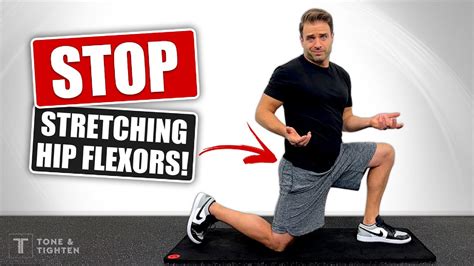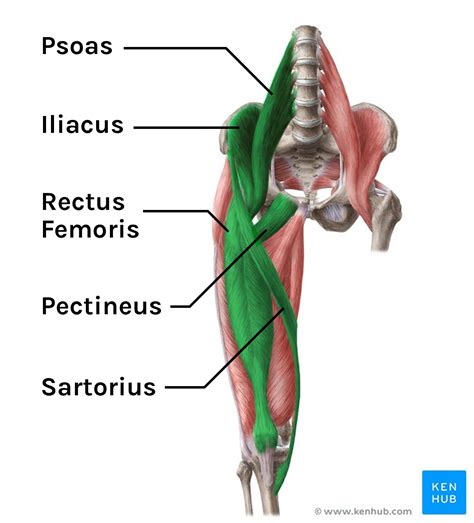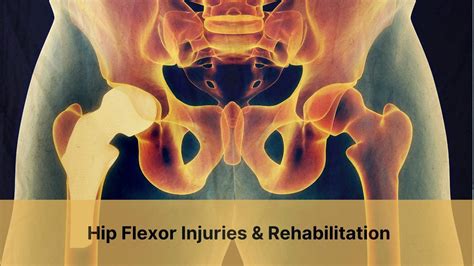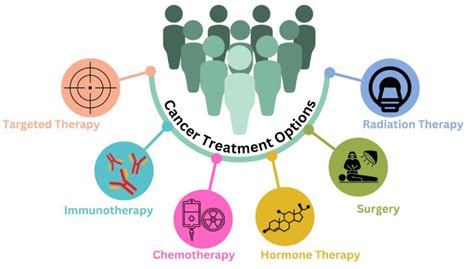The hip flexor is a group of muscles that play a crucial role in our daily movements, such as walking, running, and climbing stairs. However, hip flexor injuries are common, especially among athletes and individuals who engage in regular physical activity. If you're experiencing hip flexor pain or discomfort, it's essential to address the issue promptly to prevent further complications. In this article, we'll explore the importance of hip flexor health, the causes of hip flexor injuries, and provide you with five effective ways to fix hip flexor issues.
Hip flexor injuries can be debilitating, making it challenging to perform everyday tasks. The hip flexor muscles, including the iliopsoas, tensor fasciae latae, and rectus femoris, work together to flex the hip joint and stabilize the pelvis. When these muscles are injured or strained, it can lead to pain, stiffness, and limited mobility. Moreover, hip flexor issues can also affect other areas of the body, such as the lower back and knees, due to altered biomechanics and movement patterns.
The causes of hip flexor injuries are varied, but common factors include overuse, poor training techniques, and inadequate warm-up routines. Athletes who participate in sports that involve repetitive kicking, sprinting, or jumping are more susceptible to hip flexor strains. Additionally, individuals with poor posture, weak core muscles, or underlying medical conditions, such as arthritis or bursitis, may also be at risk of developing hip flexor problems. By understanding the causes and symptoms of hip flexor injuries, you can take proactive steps to prevent and address these issues.
Understanding Hip Flexor Anatomy
To effectively fix hip flexor issues, it's essential to understand the anatomy of the hip flexor muscles and their functions. The iliopsoas muscle, for example, is the primary hip flexor, responsible for flexing the hip joint and stabilizing the pelvis. The tensor fasciae latae muscle, on the other hand, helps to flex and internally rotate the hip joint. By understanding the anatomy and functions of the hip flexor muscles, you can develop targeted exercises and stretches to address specific issues.
Causes of Hip Flexor Injuries
Hip flexor injuries can be caused by a variety of factors, including overuse, poor training techniques, and inadequate warm-up routines. Athletes who participate in sports that involve repetitive kicking, sprinting, or jumping are more susceptible to hip flexor strains. Additionally, individuals with poor posture, weak core muscles, or underlying medical conditions, such as arthritis or bursitis, may also be at risk of developing hip flexor problems. By identifying the underlying causes of hip flexor injuries, you can develop effective prevention and treatment strategies.
5 Ways to Fix Hip Flexor Issues

Here are five effective ways to fix hip flexor issues:
* **Stretching and Foam Rolling**: Stretching and foam rolling can help to reduce muscle tension and improve flexibility in the hip flexor muscles. Focus on stretches that target the iliopsoas, tensor fasciae latae, and rectus femoris muscles, such as the kneeling hip flexor stretch and the standing leg stretch.
* **Strengthening Exercises**: Strengthening exercises can help to improve the strength and stability of the hip flexor muscles. Focus on exercises that target the iliopsoas, tensor fasciae latae, and rectus femoris muscles, such as the plank, side plank, and leg press.
* **Physical Therapy**: Physical therapy can help to address underlying movement patterns and biomechanical issues that may be contributing to hip flexor problems. A physical therapist can help you develop a personalized exercise program to improve hip flexor strength, flexibility, and function.
* **Rest and Recovery**: Rest and recovery are essential for allowing the hip flexor muscles to heal and recover from injury. Avoid activities that aggravate the condition, and focus on low-impact exercises, such as cycling or swimming, to maintain cardiovascular fitness.
* **Modalities and Treatments**: Modalities and treatments, such as heat, cold, and electrical stimulation, can help to reduce pain and inflammation in the hip flexor muscles. Your healthcare provider may also recommend injections or medications to help manage symptoms and promote healing.
Prevention Strategies
To prevent hip flexor injuries, it's essential to develop a comprehensive training program that includes stretching, strengthening, and conditioning exercises. Here are some prevention strategies to consider:
* **Warm-up and Cool-down Routines**: Develop a warm-up and cool-down routine that includes stretching and foam rolling to reduce muscle tension and improve flexibility.
* **Strengthening Exercises**: Incorporate strengthening exercises into your training program to improve the strength and stability of the hip flexor muscles.
* **Proper Training Techniques**: Focus on proper training techniques, such as proper posture, biomechanics, and movement patterns, to reduce the risk of injury.
* **Injury Prevention Programs**: Consider injury prevention programs, such as the FIFA 11+ program, which can help to reduce the risk of hip flexor injuries and other sports-related injuries.
Treatment Options
If you're experiencing hip flexor pain or discomfort, it's essential to seek medical attention to determine the underlying cause of the issue. Here are some treatment options to consider:
* **Physical Therapy**: Physical therapy can help to address underlying movement patterns and biomechanical issues that may be contributing to hip flexor problems.
* **Modalities and Treatments**: Modalities and treatments, such as heat, cold, and electrical stimulation, can help to reduce pain and inflammation in the hip flexor muscles.
* **Injections and Medications**: Injections and medications, such as corticosteroids and pain relievers, may be recommended to help manage symptoms and promote healing.
* **Surgery**: In severe cases, surgery may be necessary to repair or reconstruct the hip flexor muscles.
Recovery and Rehabilitation
Recovery and rehabilitation are critical components of hip flexor treatment. Here are some tips to consider:
* **Rest and Recovery**: Allow the hip flexor muscles to rest and recover from injury. Avoid activities that aggravate the condition, and focus on low-impact exercises to maintain cardiovascular fitness.
* **Physical Therapy**: Work with a physical therapist to develop a personalized exercise program to improve hip flexor strength, flexibility, and function.
* **Pain Management**: Focus on pain management techniques, such as deep breathing, meditation, and relaxation, to reduce stress and promote healing.
* **Progressive Loading**: Gradually progress to more intense activities and exercises to promote strength and function in the hip flexor muscles.
Conclusion and Next Steps
In conclusion, hip flexor issues can be debilitating, but there are effective ways to fix these problems. By understanding the anatomy and functions of the hip flexor muscles, identifying the underlying causes of hip flexor injuries, and developing a comprehensive treatment plan, you can promote healing, reduce pain, and improve function. Remember to focus on prevention strategies, such as warm-up and cool-down routines, strengthening exercises, and proper training techniques, to reduce the risk of hip flexor injuries. If you're experiencing hip flexor pain or discomfort, don't hesitate to seek medical attention to determine the underlying cause of the issue and develop an effective treatment plan.
We hope this article has provided you with valuable insights and information on how to fix hip flexor issues. If you have any questions or comments, please don't hesitate to share them with us. We encourage you to share this article with others who may be experiencing hip flexor problems, and to take proactive steps to promote hip flexor health and wellness.
What are the common causes of hip flexor injuries?
+
Hip flexor injuries can be caused by a variety of factors, including overuse, poor training techniques, and inadequate warm-up routines. Athletes who participate in sports that involve repetitive kicking, sprinting, or jumping are more susceptible to hip flexor strains.
How can I prevent hip flexor injuries?
+
To prevent hip flexor injuries, it's essential to develop a comprehensive training program that includes stretching, strengthening, and conditioning exercises. Focus on proper training techniques, warm-up and cool-down routines, and injury prevention programs to reduce the risk of hip flexor injuries.
What are the treatment options for hip flexor injuries?
+
Treatment options for hip flexor injuries include physical therapy, modalities and treatments, injections and medications, and surgery. The treatment plan will depend on the severity of the injury and the underlying cause of the issue.







